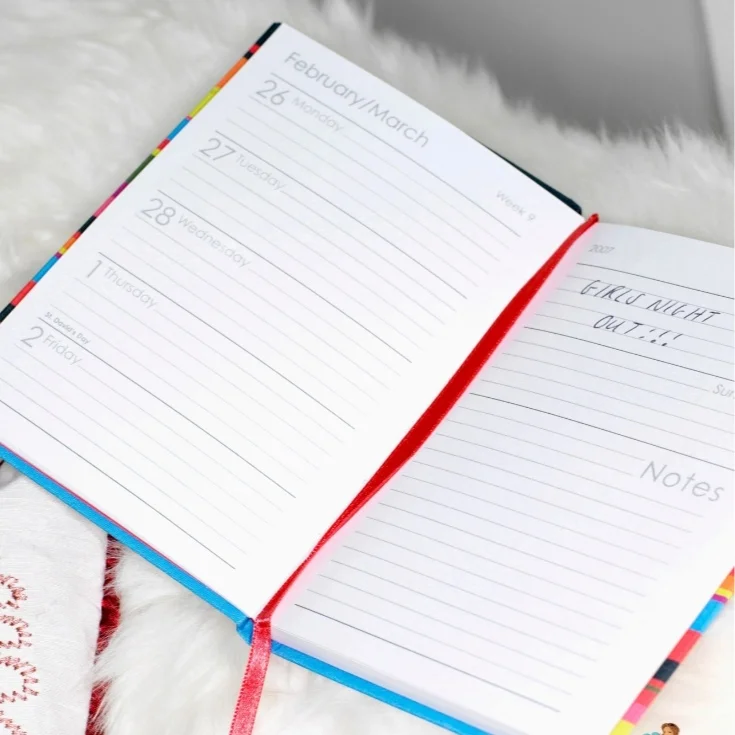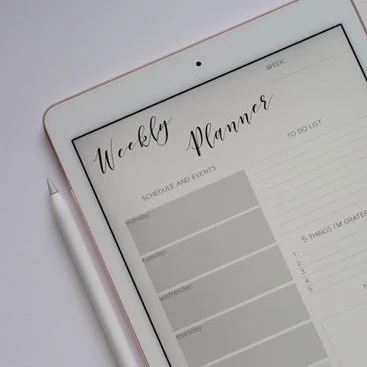I've never been good at meal planning. It seems so good in theory, but I just never was able to get started with it. It's kind of weird since I am all about planning and organizing everything else.
There are tons of benefits to meal planning. First, you know what you are eating each day. No more staring at the fridge and hoping answers will come to you. What a time waster.
Second, you can plan your food shopping based on your meals. You can plan for a leftover night or use recipes that incorporate one night leftovers into the next day's meals. This helps know what to buy when you enter the store. You can get in and out. Again, a time saver.
Third, you will save money because when you shop, you will know that what you are buying goes with the recipes you are making so you won't buy things that get left in the fridge and forgotten.
Finally, and most importantly, you can help your family eat healthier. When you don't have a plan, processed foods or fast foods or delivery always seems like a better answer. But when you have a plan, you are more likely to make fresh, healthy meals at home.
With all that in mind, I have really thrown myself into meal planning for my family. I want all of us to eat healthier, I want us to save money on eating out, and I want save money on groceries that seem like a good idea, but never get eaten. And I want to save time from having to sit there and figure out what I'm making for every meal every day.
Step 1: Who is Eating When
The first thing you need to know is how many people you need to make food for at each meal. For example, my husband doesn't eat for a few hours after he first gets up and he gets up a few minutes before I leave for work in the morning. Therefore, he makes his own breakfast. I'm just responsible for me and the kids.
Also, my son gets provided lunch at school this year unlike last year, so I don't have to prepare lunch for him. For myself, I try to make a lunch that I can bring to the office.
As for dinner, everyone eats that, so it has to be enough for the whole family. Once you know who you are cooking for at each meal it's time to pick what you are eating.
Step 2: Pick Recipes
Now that you know how many people you are cooking for and how much time you have, it's time to pick recipes. In the morning a quick egg and spinach scramble can feed you and the kids and doesn't take much time. My son loves hard boiled eggs, so making a bunch on Monday means that he can have some eggs and toast all week.
For lunch, I am only feeding myself. If you're in this boat, you can either make one big meal that you can divide up for the week, or you can make two or three simple, meals that you can alternate throughout the week. This helps with ingredients since you won't be buying a bunch of ingredients that are only used in one single serving meal. I like beef and veggie bowls or chicken salad bowls. You can prep the meat ahead and just throw the lunch together in the morning.
For dinner, you can pick recipes with similar ingredients. If you have a rotisserie chicken Sunday night, on Monday use the leftover chicken for a recipe calling for shredded chicken.
In general, I don't like assuming that there will be enough leftovers for a certain dish although I will do the rotisserie chicken thing suggested above. Instead I like to plan the meals for Monday through Thursday and have Friday be either leftover or take out/delivery depending on the leftover situation. This allows the family to feel like we can enjoy take out sometimes, but its not our go-to meal.
Step 3: Put Them Into a Calendar
Next, I write out the meals I have planned into a printable Weekly Meal Plan Sheet. I post this in the kitchen so I know what to make each day and I know what's for dinner in case something needs to be prepped in the morning.
I also pull out any recipes I might need for the week. I like to print out recipes, one per page and put them in the binder. I pull out the recipes for the week and put them in the front of the binder and as I use them, they go back in their spot.
Want a printable Weekly Meal Plan Sheet? Sign up for access to my Resource Library and get the meal planning sheet I made for myself.
Step 4: Shop and Prep
Now that you know what you are making, put together a shopping list of everything you need and make time to go to the store. This time should be more that just the actual shopping time because you want to prep as well.
Once you get home, you want to prep your food for the week. You can clean and cut the veggies and put them in containers. You can grill the chicken breasts or cook the ground beef. You can hard boil a bunch of eggs for breakfasts. This will make meal prep a ton easier during the week.
If your kids are old enough, you can get them to help too. Depending on age, they can clean the produce, or help you with the chopping.
Another tip is not to be overly rigid. Sometimes things come up. Don't stress over it if work takes you out of the office and you end up having to pick something up on the go for lunch. Or if you get out of work late and don't have time to make your planned meal.
It's good to have a few freezer meals prepped for these kinds of situations. It may not be what you planned to eat, but it's still a healthy home made meal. Plus, take out once in a while is not the end of the world.
Do you meal plan? Have any tips? Share them in the comments!
Cheers,
Emily
P.S. Never miss a post by signing up for my weekly newsletter here. Not only will you get notified of the latest blog posts, but you will also get discounts, freebies, and info only for subscribers!





















